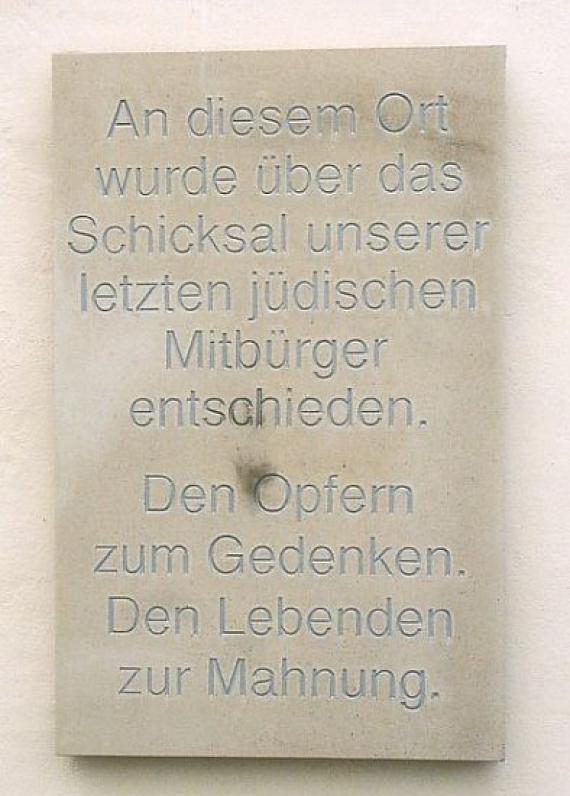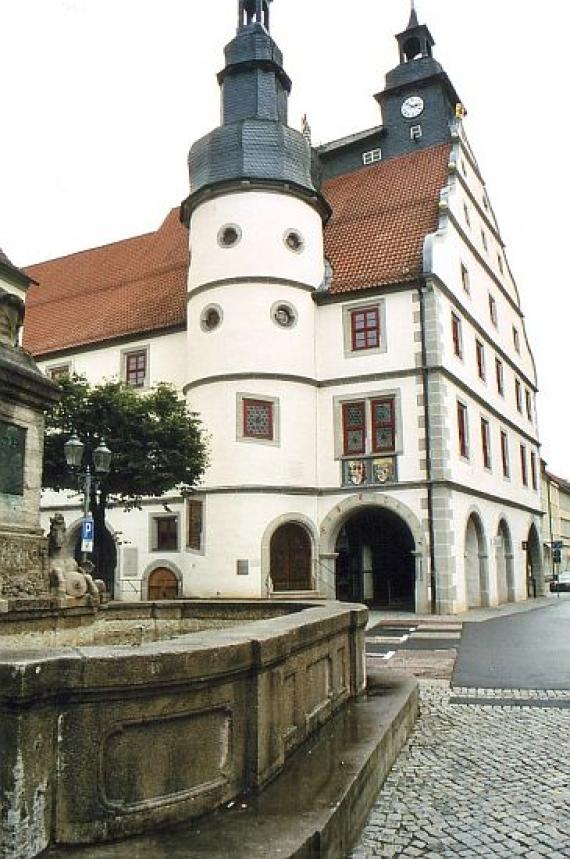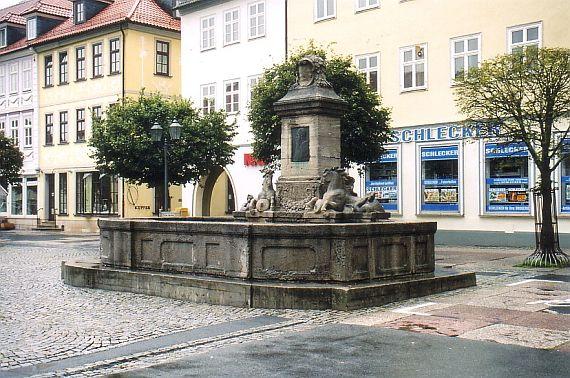In Hildburghausen Jews already lived in the Middle Ages, shortly after the place received the town charter since 1324. In 1331 Jewish inhabitants of the town are mentioned for the first time. In 1349 the persecution of Jews in the plague period also affects the Jews in Hildburghausen. In 1367 Gottschalk von Hildburghausen is mentioned in Erfurt. Around 1388 Jud Gutkind was financier of the counts of Henneberg. In 1404 Count Heinrich V. was indebted to Gutkind with 160 gulden. In 1412 Wilhelm I still had a debt of 350 gulden to pay. In the 15th century further Jews are mentioned in the town who lived from money lending. Four families may have moved in from Franconia between 1423 and 1425.
Nothing is known of an expulsion of Jews from the town. In 1723 however, there was a ban on the residence of Jews from outside the town. Since 1714 Simon Moyses from Mertzbach was court factor in the residence of Duke Ernst I (Duke of Saxony-Hildburghausen). In 1726 there were 12 Jewish families in the town, including Frank, a court factor from Holland. In 1729 the Jews of Hildburghausen were temporarily expelled to rural communities in the duchy, but were readmitted the following year. In 1748 12 Jewish families were again resident. Over the next decades their numbers increased, so that in 1796 22 Jewish families were counted in the town with a total of 128 persons. Within the framework of the teachers' seminary in Hildburghausen, Jewish teachers were also trained over several decades from the 1st half of the 19th century.
In the 19th century the number of Jewish inhabitants in Hildburghausen remained relatively constant or declined slightly (1819 113 people, 1833 123, 1844 130 of a total of 4182 inhabitants, 1856 106, 1871 120, 1898 114). Reasons for the decline were emigration and emigration. So there were emigrations to North America (New York 11 persons, Albani 1, Boston 6, San Francisco 2), Australia (1 person), Paris (1 person), Rome (1 person) and emigrations to Hamburg, Fürth and Frankfurt/Main in the 1850s. In 1942 the Jewish inhabitants still remaining in Hildburghausen were deported to Belzyce/Poland and to the concentration camp Theresienstadt respectively.
.


Add new comment